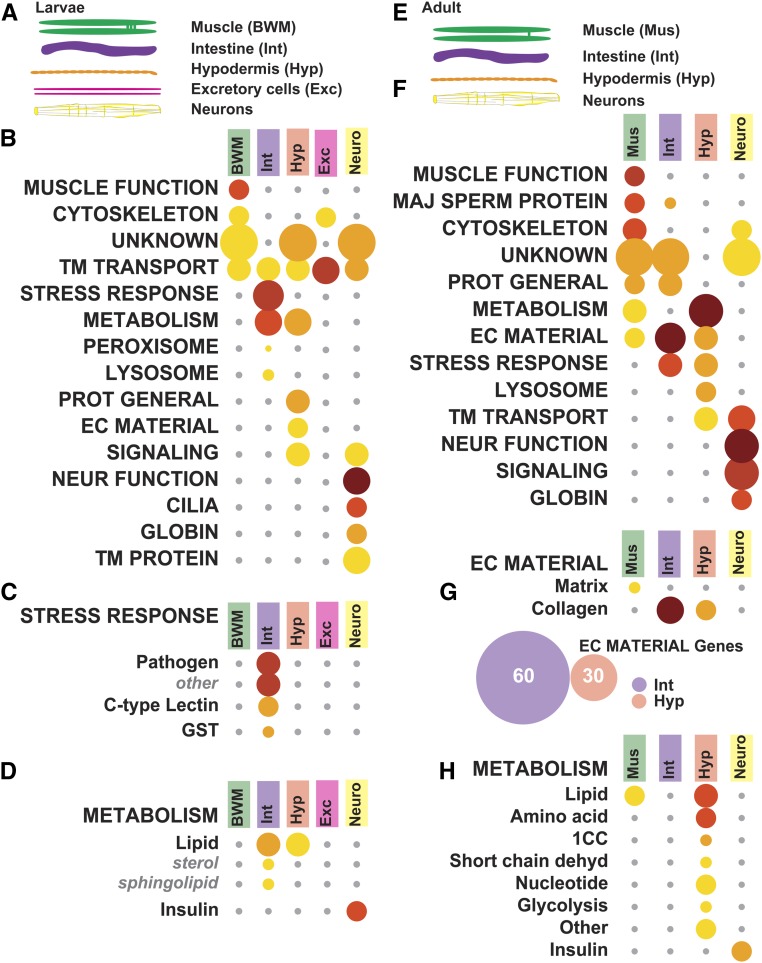Figure 4.
WormCat analysis of tissue-specific gene sets reveals the importance of the intestine in stress-responsive categories. (A) Diagram showing larval tissues isolated in tiling array data used in figures B–D from Spencer et al. (2011) (B) WormCat Category 1 enrichment for larval tissue-specific selective enriched gene sets shows differentiation of Body wall muscle (BWM), Intestine (Int), Hypodermis (Hyp), Excretory cells (Exe), and Neurons (Neuro). (C–D) Category 2 and 3 breakdown of Stress Response (C) and Metabolism (D). (E) Schematic showing adult tissues isolated for RNA-seq used in figures F–I from Kaletsky et al. (2018) (F) Category 1 analysis of enriched genes shows the differentiation of muscle and neuronal functions. (G–H) Category 2 and 3 breakdown of Extracellular Material gene enrichment, including a Venn diagram showing relationships between collagen genes in intestine and hypodermis (G), and Metabolism (H). Bubble heat plot key is the same as Figure 1D. 1CC, 1-Carbon Cycle; EC Material, Extracellular Material; GST, Glutathione-S-transferase; Maj Sperm Protein, Major Sperm Protein; Neur Function, Neuronal Function; Prot General, Proteolysis General; Short Chain Dehyd, Short Chain Dehydrogenase; TM Transport, Transmembrane Transport

